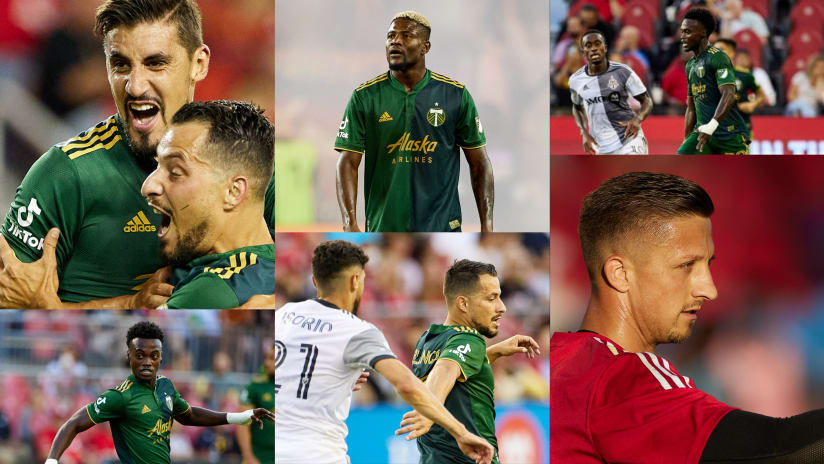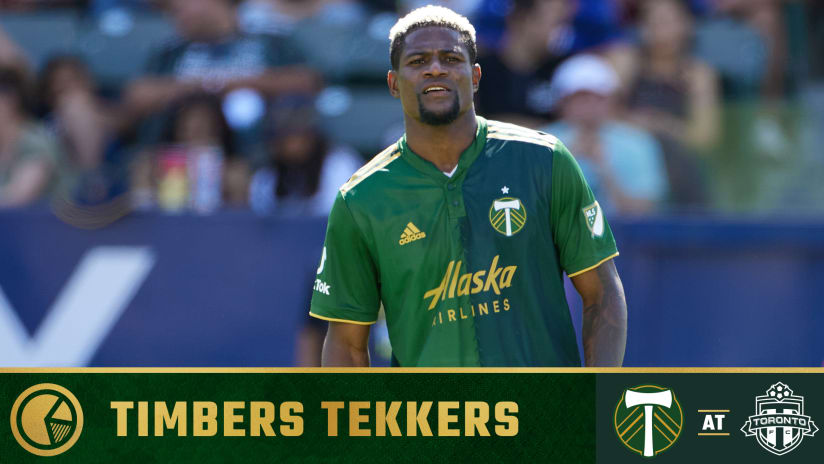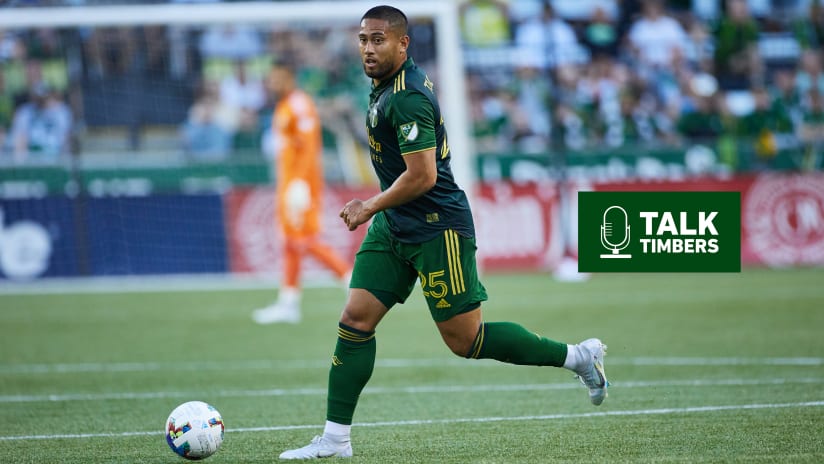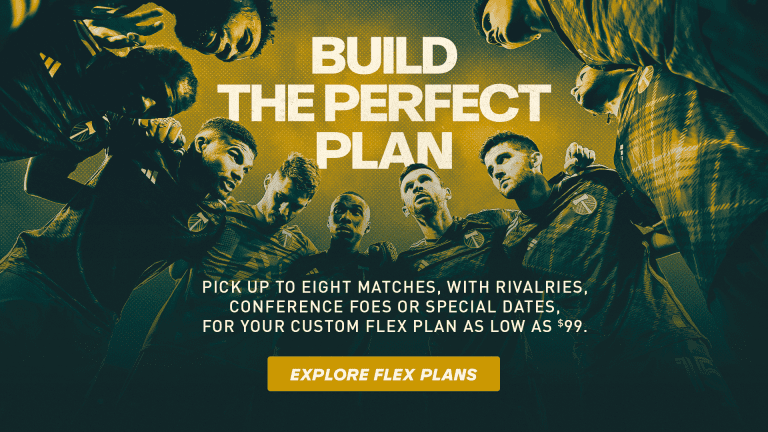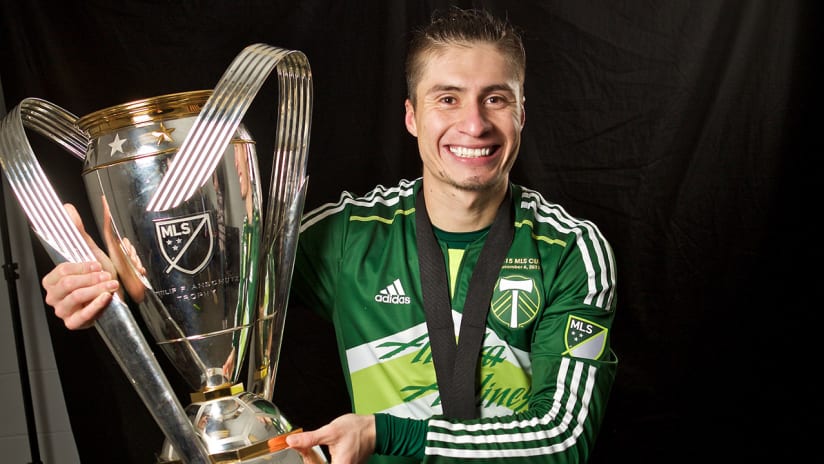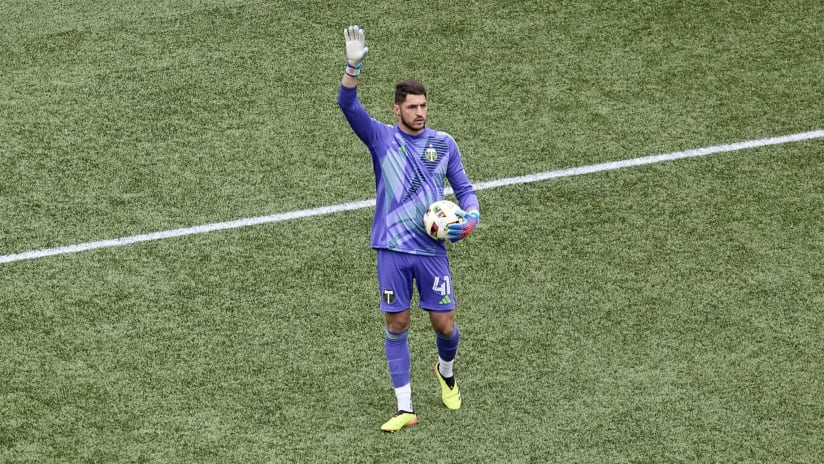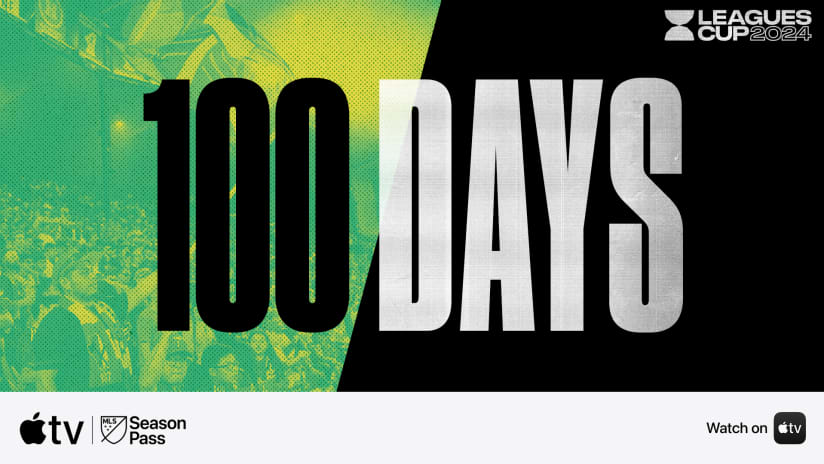“Hey, how’d the workout go yesterday? How come you didn’t get a chance to do it? Did you just forget to push submit? How are you feeling today?”
For Jon MacGregor, this conversation’s a hypothetical – a clue as to how his job has changed. In all likelihood, those questions have never been asked in that exact way, in that exact order, but it’s possible they have. MacGregor talks to soccer players as much as anyone. In this universe of possibilities, he’s explored more than most.
As Director of Player Health and Wellness for the Portland Timbers, MacGregor is part of a team that is constantly assessing a full squad of players. The Timbers currently have 27 in theirs. Multiply that number by potentially multiple interactions each day, by five or six days a week, by the forty or forty-five weeks a year MacGregor’s with the full team, and you have a year in the life of the Timbers’ Head Athletic Trainer. And this isn’t MacGregor’s first year in this job.
Under normal circumstances, most of MacGregor’s hypothetical conversation happens implicitly. He can see whether players have finished their workouts. If they’re injured or feeling under the weather, he can watch how much they’re struggling on the field. He knows when their words say one thing but their actions say another. Some things don’t have to be spelled out.
Now, though, instead of being able to feel stiff muscles and tight joints, messages have to be explicit. The intimacy of a trainer’s table is gone. In its place, it’s FaceTime and Zoom. That goes for both players and coworkers, with the performance team coming together virtually, “at least twice a week,” MacGregor says, “and that includes the Thorns, Timbers, [Timbers 2] and Academy.” The precautions the world’s taken in response to the COVID-19 pandemic have left athletic trainers at a distance.
“Being able to be outside, watch trainings: those are the areas that have changed the most, and I would say that we’ve missed the post,” MacGregor says of his last three-plus weeks at work. Like most of Oregon, he’s working from home at the moment. “The interactions, being able to treat and make guys better, prepare them for trainings, prepare them for trainings that lead into games – just the flow that you get into over the course of a season.” When Major League Soccer stopped, the Timbers had played two of the 34 games on their schedule.
Portland Thorns FC, on the other hand, were still a month away from their first match. Their preseason had just started. Players who had been on loan in other leagues or in camps with their national teams were just getting back to Oregon. Some never trained with the team before the Zoom meetings started.
- DOWNLOAD: 90-Day free Premium Membership to the adidas Training App
- PTFC STAY AT HOME GUIDE: Activities, videos and more from the Timbers and Thorns
“Lucky for us, everybody is pretty healthy right now,” the Thorns’ Head Athletic Trainer, Pierre Soubrier, says. “We don’t have anybody that has a need for one-on-one work, per se. So we can do everything remotely and prescribe rehab via the apps and software that we use.”
Which, just like MacGregor’s world, is not the same. It’s just the best the Thorns can do. Since mid-March, training facilities have been closed, including the Thorns’ at Providence Park. It leaves people like Tom Milroy, the Thorns’ new performance coach, trying to make sense of a different world.
“Remote training is challenging for a coach because you miss out on that connection with the athlete, and equally challenging for the athlete because it requires more discipline and focus in some ways,” Milroy explains. Having joined Portland this offseason, Milroy’s only face-to-face interactions were with the team’s first preseason arrivals. Much of the Thorns’ squad only know their new trainer from Zoom.
Even for those like MacGregor and Soubrier, trainers who are more familiar with most of their players, the relationships are different. Whereas life at the Training Center or Providence Park allows athletes to enter work mode, assuming the persona they’ve carried with them throughout their athletic careers, today’s meetings happen in the home. They happen with family, children, or roommates near. They become breaks in lives which, for some players, are very different than their lives on the field.
“It’s a great chance to potentially get to know players in a little bit different of a way, that we normally wouldn’t have a chance to get to know them from seeing them every day [at training],” MacGregor says. For him, the contrast has been a welcome one. “This is a different lens that you’re looking at them through, so it’s great. You learn new things and different things about players that you didn’t think you’d ever have a chance to learn from, just through the means of the situation we’re in.”
“I’ve learned so much in the past two weeks about their personal trends and how they fill out their [wellness] surveys every morning, and what they think they mean and how it actually translates to me,” Soubrier explains. Those surveys are often general assessments – of mood, sleep patterns, general health – though questions about COVID-19 symptoms have been added during this time. “You’re really talking through those things, and having those open conversations have been an eye-opener ...
“They’re all going through different things,” Soubrier explains, about the players. “They’re all struggling. No one is comfortable struggling, as in mentally. They all want to touch the ball. They all want to get on the field. However, they’re limited.”
“The most important thing I am doing right now in my role is supporting the players …,” Milroy says. “During this time there are some foundational things all players need, but each player is different, and there are specific things they need to feel like they are improving. Knowing that comes from getting to know the players, working with the other staff who have their insights, and putting together programs that fit both the athlete and team goals for continued development.”
That’s where the rest of the teams’ technologies come in. On a personal level, trainers’ jobs have had to adapt. “We’ve always been mediators in the workplace,” Soubrier says, “but in terms of mental coaching or discussions like that, [the current situation] just opens a new world.”
But when it comes to raw data, isolation hasn’t prevented staffs from obtaining their numbers, with software and wearable devices providing the context for MacGregor’s “did you just forget to hit submit” hypotheticals.
“The platform that the club uses, Bridge Athletic, allows us to see various metrics about the athlete’s training session,” Milroy explains, listing off some of the variables he’s able to monitor. “Weight used, duration, heart rate, repetitions, [rate of perceived exertion] – [the platform[ engages the athletes to give us direct feedback about their training session ...
“I use this along with the medical staff to see how they are responding to the previous day of training, and we can make adjustments accordingly. This is something we do during normal training, but because we can’t see the players, this becomes even more valuable and effective for managing each player and their training.”
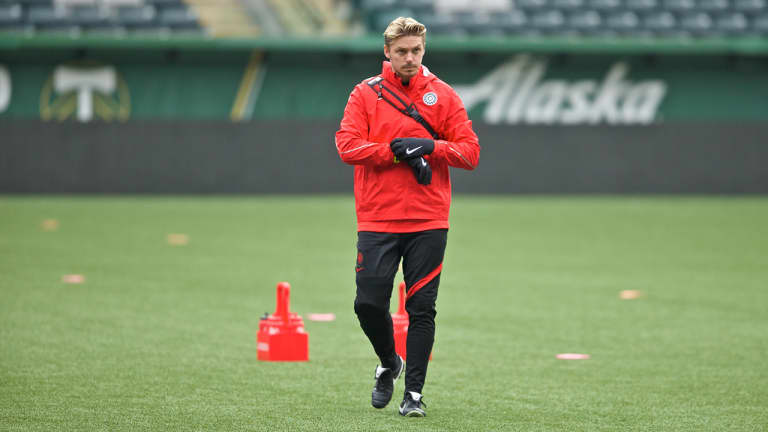
Pierre Soubrier (Photo by Craig Mitchelldyer / Thorns FC)
Though the location and depth of those training sessions have changed, one small element, the equipment, is largely the same. Across the workout areas in both the Timbers Training Center and, for the Thorns, at Providence Park, fitness rooms have been cleared out of stationary bikes, kettlebells, weights, bands and yoga mats. Over the first days of training centers being closed, that equipment was distributed across Portland, with the shift to players’ homes hoping to replicate what athletes would have in Beaverton or Goose Hollow, to the extent that was possible.
“When players need something, they reach back out,” MacGregor says. “If we can get them a little bit heavier of a weight, we’re trying to find them a very safe way to exchange those. And obviously, when we get it all back, it will be cleaned and sanitized very, very well, whenever that is.”
Between the technologies and equipment, both the Thorns and Timbers staffs are confident their players can stay in shape. “On a fitness standpoint, I think they’ll do fine,” Soubrier says. “On the strength standpoint, I think they’ll be there.” But just as the club’s athletic training groups can only do so much without access to their normal routines, so too can players only do so much without their actual sport.
“The physical demand on them when they return back to training will be very different from the last several weeks,” Milroy explains. “Some of the things we are going to consider are surfaces (returning to turf, have been running on concrete), multi-directional soccer movements (changing direction, accelerating and decelerating), mental and physical demand of game-speed actions, and access to training equipment (gym equipment that they may not have access to now).
“The goal is to plan and prepare this transition so that we reduce the likelihood of picking up injuries as the players return, but also that they are physically prepared to work on the technical aspects of the game that the coaches need them to.”
Laid out as a matter of fact, the final transition feels daunting. For MacGregor, though, that change is merely part of the challenge, and not necessarily a specter that looms.
- WATCH:PTFC At-Home Skills | Larrys Mabiala with Wall Passing
- WATCH:PTFC At-Home Skills | Madison Pogarch with at home foot golf
“To be fair, yeah, they’re going to miss a little bit by not getting the day-to-day training,” he admits, “but I think one aspect that we’ve been really good at – I’m going to throw the whole performance department in, so sports science, sports medicine; everybody on T2, the Thorns and the Academy side – is structuring their programs through the app that we use, to be able to simulate soccer movements.
“Yeah, they’re not out there training. Yeah, they’re not getting the full gambit that they normally would. But I think we’re done such a good job of setting it up that when they get back in, I think their bodies are going to be pretty well ready to handle the adaptation that they’re going to get when we do get back to training. That’s just a kudos to our entire group for staying on top of it.”
And, as Soubrier said, the challenges of that final step are not unique to the Timbers or Thorns. “It’s across all leagues,” he said. “That’s not just for us.” In that sense, keeping players healthy could be another element of competition between clubs. It’s just a matter of when that competition starts, and when training staffs see if their processes have paid off.



